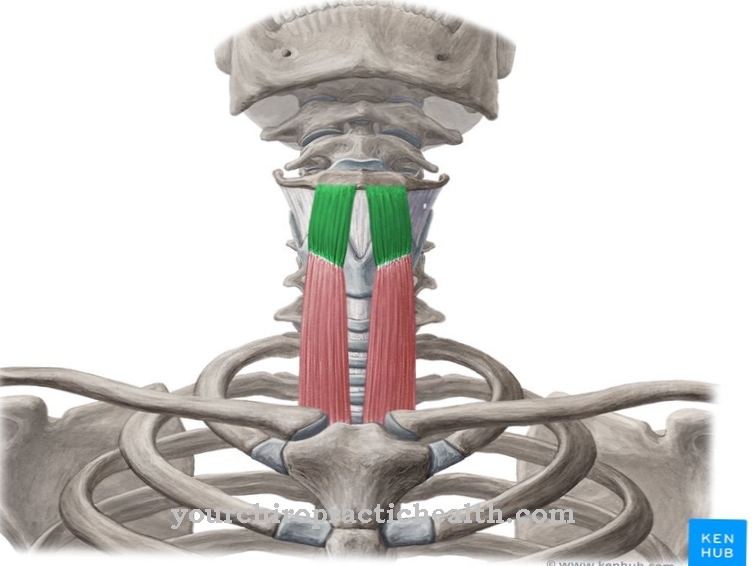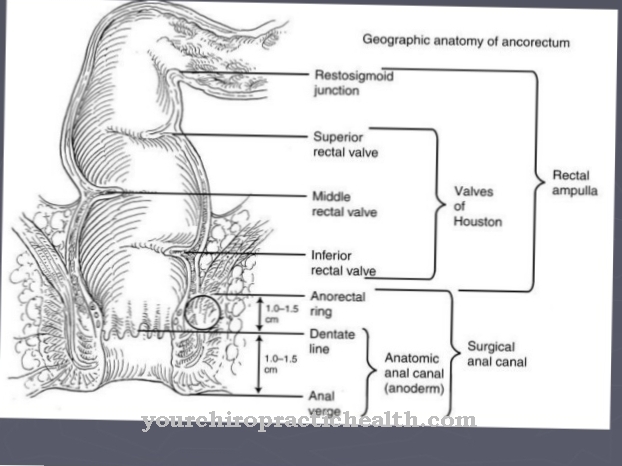Of the Golgi apparat belongs to the cell organelles and is used to modify and sort proteins. It works closely with the endoplasmic reticulum. He is also involved in secretion formation.
What is the Golgi Apparatus?
The Golgi apparatus is an important cell organelle in which the proteins produced in the endoplasmic reticulum are changed and sorted. In addition, it forms lysosomes, which contain enzymes for breaking down the body's own and foreign proteins. The lysosomes are membrane-enclosed cell organelles which, via proton pumps, generate a low pH value inside and thereby acidify the enzymes.
The Golgi apparatus is present in every eukaryotic cell and forms a membrane-enclosed reaction space that plays an important role in exocytosis. It was discovered by the Italian pathologist Camillo Golgi in 1898 during histological examinations of the brain and named after him. Inside the Golgi apparatus, the proteins of the endoplasmic reticulum react to modify them with other proteins or with sugar residues (glycosylation).
In this way, the proteins are first brought into their transportable form. Then they are sorted according to their destination. However, no new proteins are created within the Golgi apparatus, only existing ones are changed.
Anatomy & structure
The Golgi apparatus is characterized by stacks of flat, membrane-enclosed cavities. These cavities are called cisterns. As a rule, the stack contains three to eight cisterns. Sometimes it can be up to 30 cisterns. The stack has an average diameter of one micrometer. The technical term for a stack is dictyosome.
The number of dictyosomes depends on the cell type. Some cells can contain up to several hundred dictyosomes. Microtubules ensure that the Golgi apparatus in animal and human cells is mostly located near the cell nucleus and the centrosomes. In most plant cells, however, the Golgi apparatus is distributed over the entire cytoplasm of the cell. An important property of the Golgi apparatus is its polarization. The side facing the endoplasmic reticulum is convex and the side facing away from it is concave. The Golgi apparatus receives from the endoplasmic reticulum vesicles equipped with the coat protein COP II.
The convex side is also known as the cis Golgi network (CGN). The side facing away from the ER is called the trans-Golgi network (TGN). The Golgi networks represent several small cisterns and vesicles that are connected to one another. The cisterns between the Golgi networks are the so-called Golgi stacks, which have a specific enzymatic structure.
The proteins run from the cis-Golgi network to the trans-Golgi network. There are two models for this process, and both are likely to apply.Either the vesicles move from the CGN to the TGN, with the proteins being retained, or the proteins are subject to a transport movement from vesicle to vesicle in the direction of the TGN.
Function & tasks
The Golgi apparatus has diverse and very complex functions. Three areas of responsibility emerge. This is how elements of the plasma membrane are synthesized and modified. Secretory vesicles with transmitters and hormones are formed and stored. Finally, lysosomes are made to store digestive enzymes.
Initially, the Golgi apparatus mainly receives vesicles containing proteins or polypeptides from the endoplasmic reticulum. Within the Golgi apparatus, these proteins are further modified depending on their intended use. There is either a bond with sugar residues or with other proteins. The modified proteins are transported to the TGN, where they are sorted, packed in Golgivesicles, labeled with signaling substances and forwarded to the destination via various transport mechanisms. Most of the proteins are transported out of the cell.
Outside the cell, they are used to modify the extracellular matrix. This serves the intercellular communication and the stability of the tissue. Furthermore, the Golgi apparatus forms primary lysosomes, which contain lytic enzymes. These enzymes are used to dissolve substances within and outside the cell. The enzymes develop their greatest activity in the acidic range at a pH of approx. 4.5.
This pH value can only be achieved in membrane-enclosed reaction spaces by means of proton pumps. The interior of the lysosome is protected against acid by proteoglucans. In addition, the lytic enzymes are modified with mannose-6-phosphates in order to be recognized by special receptors on the lysosome membrane.
You can find your medication here
➔ Medicines for muscle weaknessDiseases
The processes in the Golgi apparatus are very complex. Disorders of the transport system can lead to serious diseases such as cancer or diabetes. The exact mechanisms are not yet known. However, intensive research is being carried out on this problem. There is also evidence that autoimmune reactions against the elements of the Golgi apparatus can lead to diseases of the rheumatic type.
Over 75 percent of patients with Sjögren's syndrome have an antibody against a protein in the Golgi apparatus. Many patients with rheumatoid arthritis, idiopathic pulmonary fibrosis or proliferative glomerulonephritis also carry antibodies against proteins of the Golgi apparatus. Corresponding antibodies were also discovered in the course of investigations into various infectious diseases and cancers. These are additional reactions within these diseases that are likely to be genetically influenced.
However, the course of the disease in question can be significantly influenced by it. Other studies examined the direct influence of chlamydia on the Golgi apparatus, among other things. Chlamydia is sexually transmitted and often leads to infertility in women. The research found that chlamydia fragment the Golgi apparatus and break it down into small mini-stacks. The studies showed that this enables the chlamydia to multiply better and produce more infectious particles.




.jpg)




















.jpg)

.jpg)
